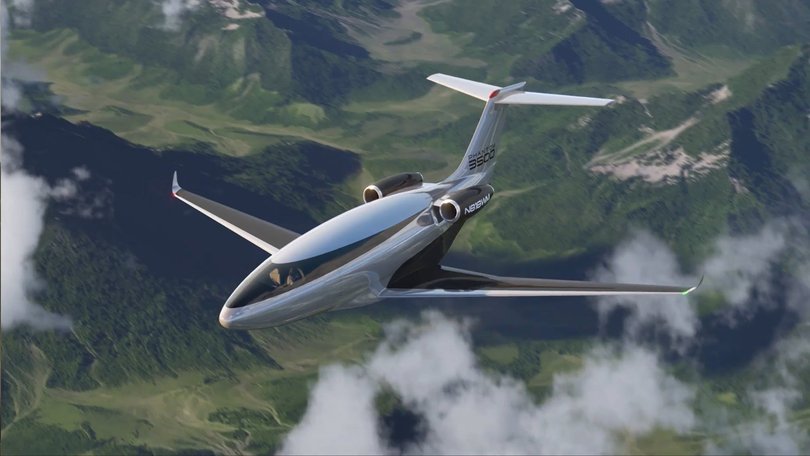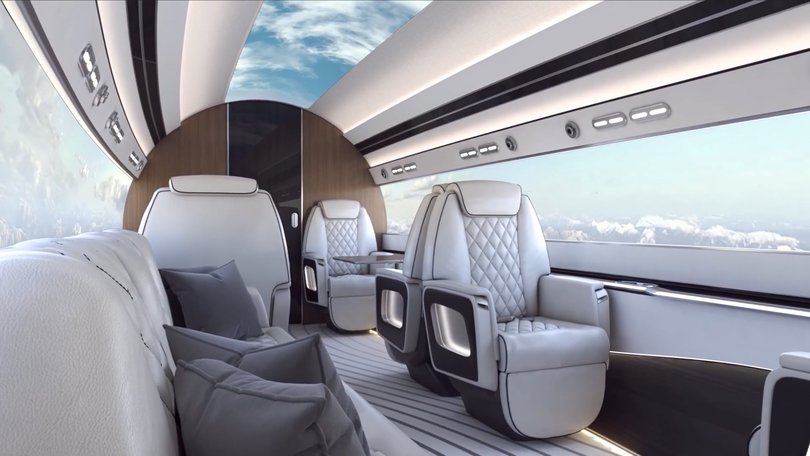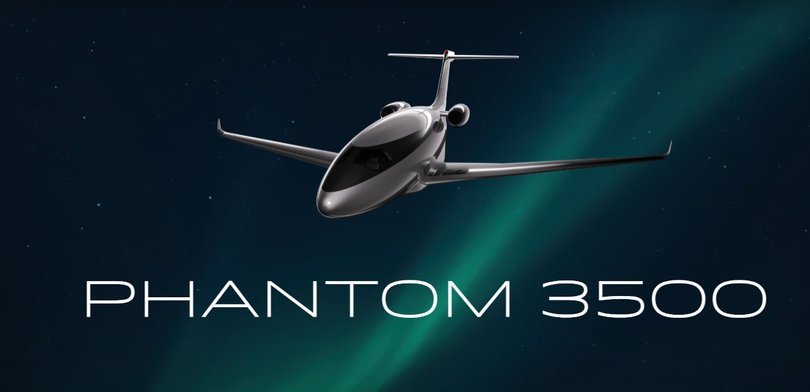Otto Aerospace’s Phantom 500 windowless jet may be the future of passenger travel

The world’s first windowless passenger plane could fly within two years, dramatically lowering the cost of private aircraft travel.
A Texan aircraft maker, Otto Aerospace, this week unveiled designs for the Phantom 3500 nine-seat business jet, which will have a 1.8-metre wide video screen connected to external cameras instead of windows.
By removing the weight of windows and designing a more streamlined fuselage, the plane will consume 60 per cent less fuel than jets of a similar size, the manufacturer said. Flexjet, a private jet company, has ordered 300 - deliveries that are scheduled to start in 2030 after the first flight in 2027.
Sign up to The Nightly's newsletters.
Get the first look at the digital newspaper, curated daily stories and breaking headlines delivered to your inbox.
By continuing you agree to our Terms and Privacy Policy.“As one of the largest business jet orders in private aviation history, this marks a turning point in the industry’s move toward sustainable and efficient air travel,” said Otto Aerospace chief executive Paul Touw.

Cheaper airfares
Australian experts said the Phantom 3500 could change the future of aircraft design by demonstrating that heavy glass panes and reinforced engineering around windows are not needed. While some cargo planes are windowless, no passenger aircraft have been built without them.
Lighter aeroplanes should lead to cheaper airfares by reducing fuel consumption. “The fuel portion of any aircraft operation is the largest cost of the actual trip itself,” said Matthew Marino, an RMIT associate professor of Aerospace Engineering and Aviation. “It would certainly translate to cheaper flights and or more profitability for the actual airline.”
The windowless design could be replicated on jets seating more than 200 passengers, and given there are no proven alternatives to fossil fuel when it comes to powering jets, such weight reduction would be an essential goal, experts said.
Aeroplane manufacturing giants Boeing and Airbus will likely be considering windowless planes too, according to Keith Tonkin, the Brisbane-based chief executive of airport consultancy firm Aviation Projects.
“All of these ideas are definitely being investigated because the aviation industry has this long-term aspiration or goal of net zero by 2050,” he told The Nightly.
“Achieving significant reductions in emissions is really important and if this technology helps to achieve that, then that would definitely be interesting to the aircraft manufacturers.”

‘Big leap’
Dr Marino said a 60 per cent reduction in fuel use would translate into a 60 per cent reduction in carbon emissions, given aeroplanes typically produce 3.16 kilograms of carbon for every kilogram of kerosene-based A-1 jet fuel they burn.
“It’s very significant - however it’s a claim. If they have, in fact, got a situation whereby you have 60 per cent less fuel usage, then that will trickle into, essentially the whole aviation industry,” he said.
“That’s kind of a very big leap in technology development and a huge leap in fuel reduction. I’m pretty sure that the big primes such as Airbus and Boeing are going to take massive notice and essentially, they’re going to want to try and adapt the same technology.”
Windowless travel might not appeal to all travellers, though.
“Instead of having a window to look out of, they project the outside internally into the cabin so that the passenger has a feeling of flying and actually has visibility around the aircraft,” Dr Marino said.
“Trying to go into the psychology of all that is not my expertise but I dare say it wouldn’t be an easy thing to sell.”
Not to mention the safety aspect of windows on a plane so cabin crew can observe problems with a flap system, wing tip or an engine.
“You don’t have that view point any longer. I would say it would be a significant, increased risk,” he said.

